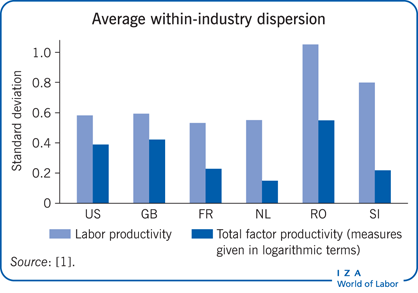Elevator pitch
Recent research has revealed enormous variation in performance and growth among firms, which both drives and is driven by large reallocations of inputs and outputs across firms (churning) within industries and markets. These differences in firm-level outcomes and the associated turnover of firms affect many economic policies (both labor- and non-labor-oriented), on both a microeconomic and a macroeconomic scale, and are affected by them. Properly evaluating these policies requires familiarity with the sources and consequences of firm-level variation and within-industry reallocation.

Key findings
Pros
Enormous differences in firm-level performance and reallocations within industries are common facets of production economics.
Dispersion and turnover shape the micro- and macroeconomic phenomena that interact with various policies.
Microeconomic policies that affect and are affected by firm-level variation and churning include hiring or investment regulations, taxes, and subsidies.
Macroeconomic policies tied to firm-level dispersion and reallocation include national trade policies and laws and regulations that shape the allocation of production across businesses within industries or markets.
Cons
Much of what is known about variation in firm-level outcomes and within-industry reallocation comes from data collected by national statistical agencies for constructing aggregates, not expressly for learning about dispersion and churning.
Considerably more could be learned from expressly designed data collection, but this would be expensive and involve budget tradeoffs.